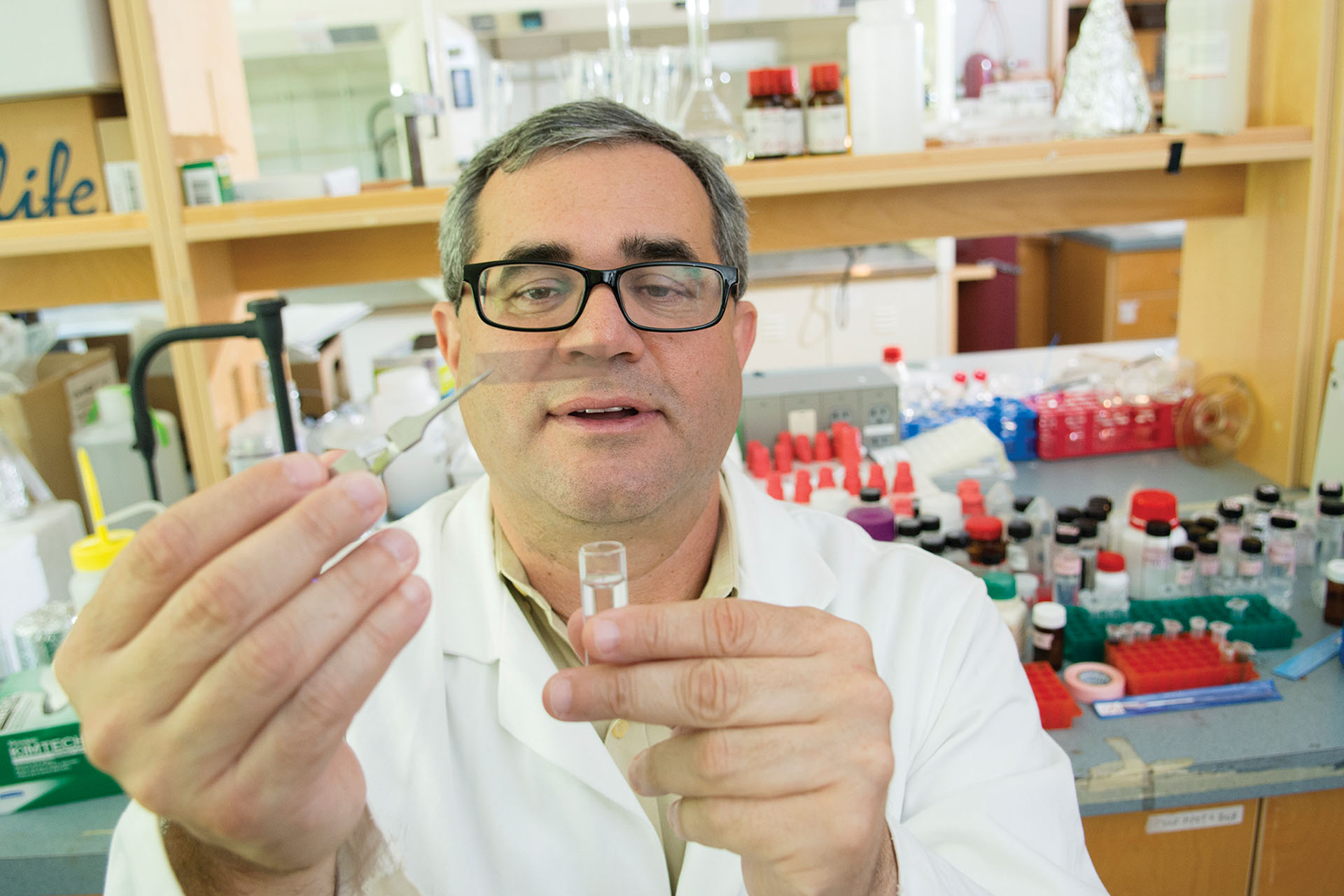Golden opportunity
- Patty Pitts

We use gold for jewelry, tooth fillings and Olympic medals—and soon for Zika detection.
To most people, gold is a way of measuring wealth. But for UVic physical chemist Alex Brolo, the precious metal may provide a faster way to diagnose devastating viruses such as Zika and dengue fever—and even cancer.
Brolo is developing new ways to use gold nanostructures—microscopic bits of matter 10,000 times smaller than the width of a human hair—in medical applications.
“When metals become very, very small their properties change. We can manipulate these properties and learn how to translate them to new technologies,” says Brolo, who is director of UVic’s Centre for Advanced Materials and Related Technology (CAMTEC).
“I’m very interested in learning how to chemically modify the surface of gold to make it possible to target specific molecular markers from human samples, such as saliva or blood.”
The key to advancing the fight for early detection of the Zika virus is an extremely thin, postage stamp-sized plastic strip on which the surface appears pricked with minute punctures. Each “puncture” is actually thousands of surface-modified gold nanostructures—nano gold—that turns colour when exposed to saliva containing the Zika virus.
Brolo aims to take this inexpensive, easy-to-use detection method directly into the neighbourhoods and regions where Zika and dengue fever are prevalent, and the mosquitoes that cause them are most likely to breed.
He’s already conducted a pilot project in his native Brazil with 30 strips that proved 60 per cent accurate in detecting dengue fever. By the end of this year, he hopes to conduct a more extensive test with 200 strips involving collected samples from suspected Brazilian Zika patients. The project is funded by a $25,000 Grand Challenges Canada grant.
“Right now, Zika tests are blood-based so the samples have to go to labs, but tests involving saliva can be done in a neighbourhood clinic by health workers,” says Brolo. “The idea is to use hand-held devices, like cell phones, to feed data about the contaminated individuals to a Google-based map. This will provide a real-time record of the infestation, allowing government officials to respond quickly.”
Brolo emphasizes fabricating the nanostructures, understanding how they work and applying them through various technologies when teaching his undergraduate and graduate students who participate fully in his research work.
“They prepare the strips, make solutions, take images, even provide their own saliva for the testing,” says Brolo.
While the Zika and dengue fever viruses are currently Brolo’s primary focus, he dreams of the day when nanotechnology also advances early cancer detection. Properly coated nano-gold also reacts with a blood sample containing cancer biomarkers.
Brolo envisions coating a chip embedded with gold nanostructures with blood from a finger prick. A scan of the blood sample for several proteins related to cancer would provide a baseline report on that patient. Subsequent annual tests would provide early detection through any spiking protein levels that may signal the presence of cancer.
While cancer’s complexities keep this type of testing a dream for now, the test strips are close to becoming a reality in the battle against Zika and dengue fever. Instead of spinning straw into gold, researchers like Alex Brolo are using gold to advance the fight against Zika and dengue fever, one nanometer at a time.
—
This article originally appeared as part of UVic Knowledge, a regular column about UVic research.

